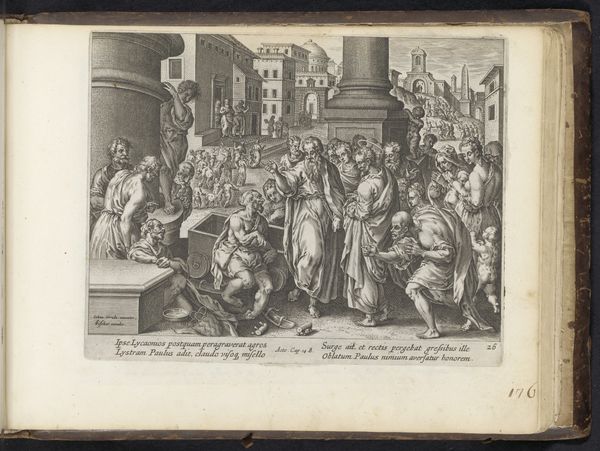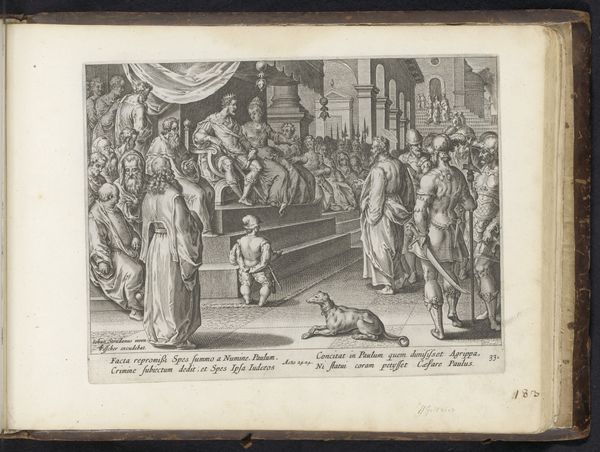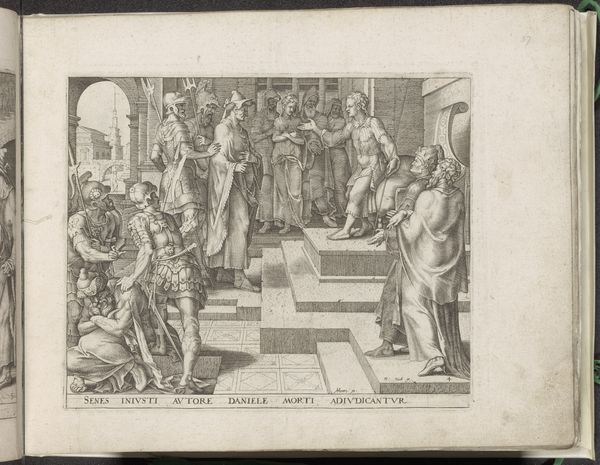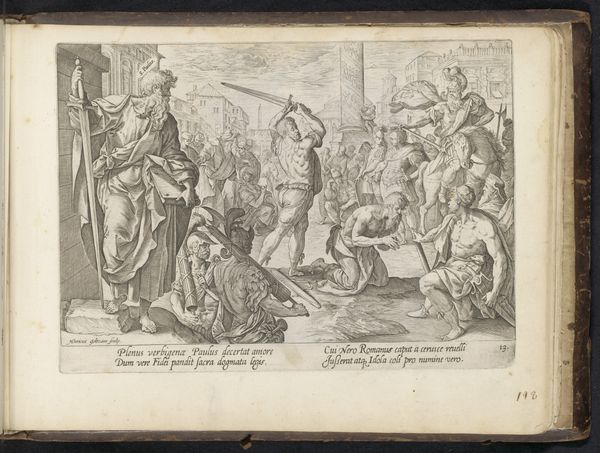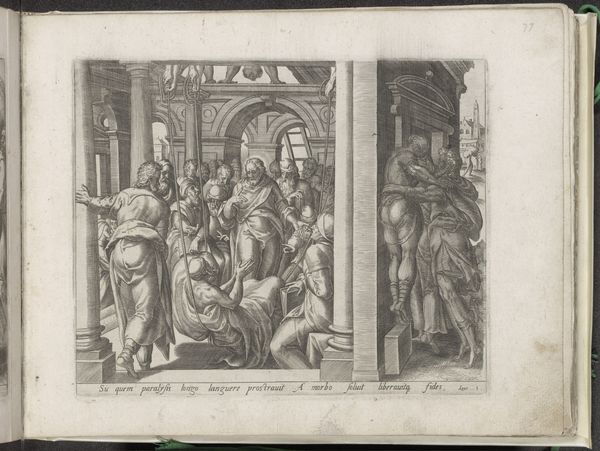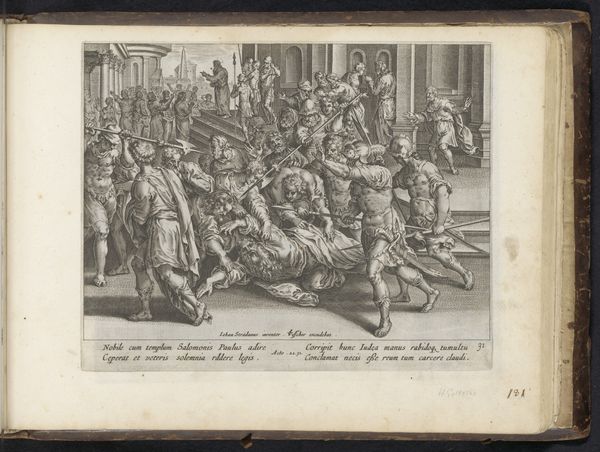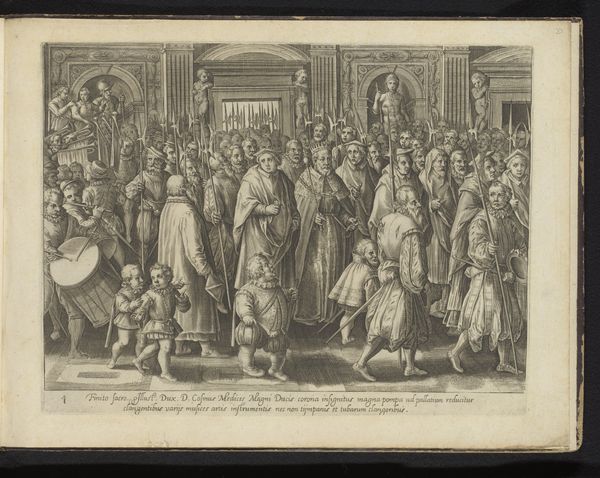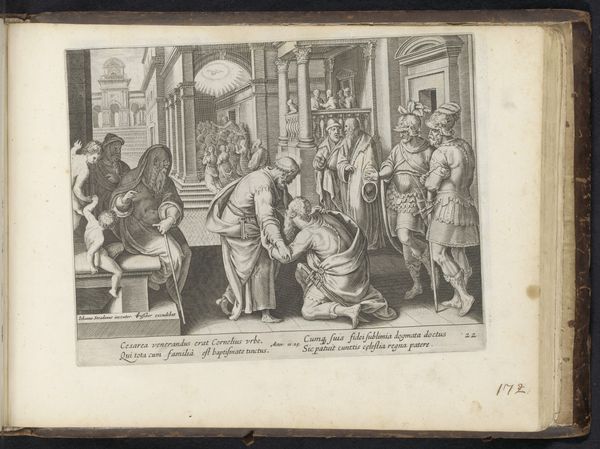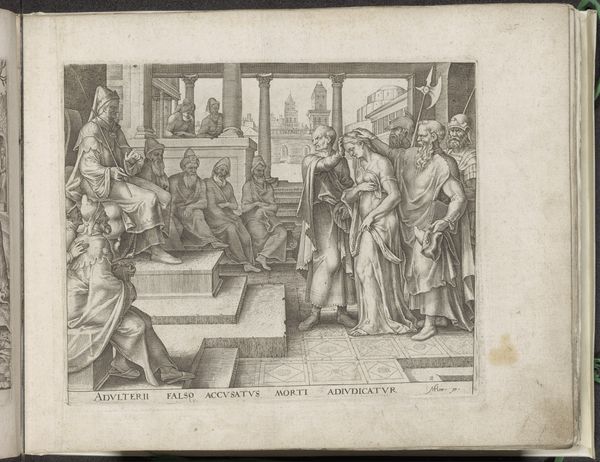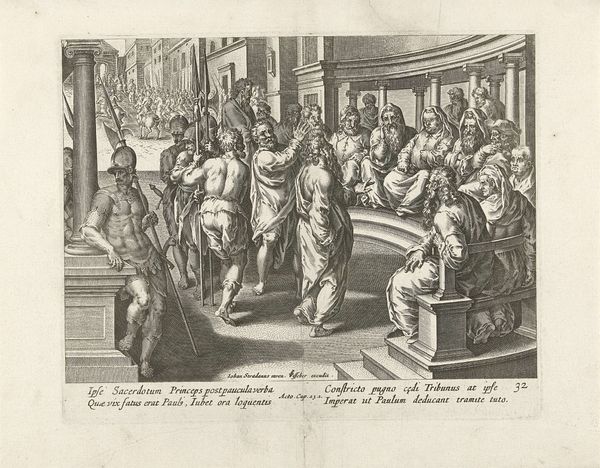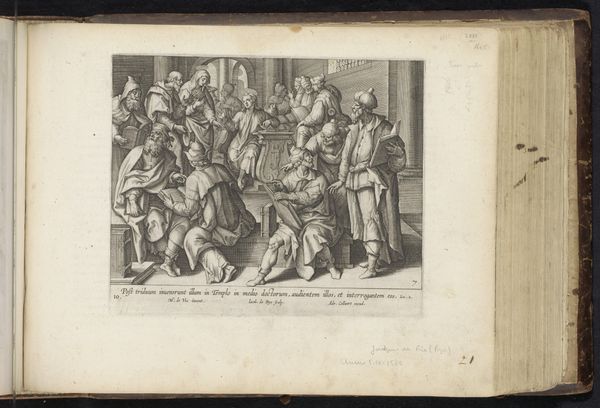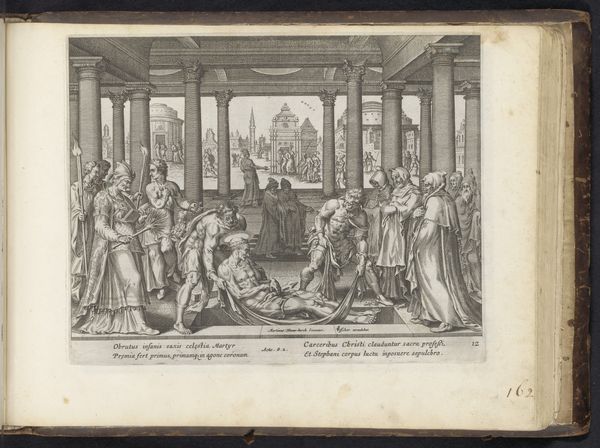
print, engraving
#
narrative-art
#
baroque
# print
#
figuration
#
coloured pencil
#
line
#
history-painting
#
engraving
Dimensions: height 210 mm, width 259 mm
Copyright: Rijks Museum: Open Domain
Curator: Let’s discuss this striking engraving titled "Paulus voor het Sanhedrin," which translates to "Paul before the Sanhedrin." It’s estimated to have been created between 1643 and 1646. Editor: Right. My initial feeling is that this artwork radiates tension, with the stark contrasts accentuating a theatrical confrontation. Almost feels like a play frozen in a single, intense moment. Curator: Exactly! This print employs Baroque style, fitting its era, emphasizing drama. It captures the Apostle Paul's trial before the Sanhedrin, a pivotal moment in Christian history and clearly one that had resonance for artists of this period. Notice how the composition stages Paul against the backdrop of the council, immediately establishing a power dynamic. Editor: It is also interesting that it depicts a moment in history in such a manner; even without the title I’d sense it being set a long time ago with those old armors and outfits of some of the men and women sitting. Do you think the setting here emphasizes more than just historical relevance? Curator: Undeniably. History painting of this kind served didactic purposes. This print doesn't merely depict an event; it uses visual language to teach moral and religious lessons, showcasing Paul’s courage and conviction. The historical setting is meticulously rendered to evoke authority and gravitas. Editor: I find that the rendering creates a distance too; I can respect the historic moment and see how fraught it is but feel removed from an emotional connection with Paul himself or other people within the picture. It feels so staged and dramatic almost as if it should be watched, rather than actually empathized with. Curator: The medium of engraving contributes to this formality. Line engravings are precise and detailed, lending themselves well to portraying complex scenes, but can sacrifice warmth for clarity. And prints at the time were so very effective, especially the history depicted through prints that could be so easily disseminated at a massive scale; ideas spread with those prints, after all. Editor: Well said. I feel it would be interesting to find more engravings and consider the context of production during the 17th century—what political undertones were conveyed with pieces like this during such era of discovery. Curator: Precisely. By situating the artwork in its time, we gain a richer appreciation for how images participated in broader conversations about power, faith, and authority.
Comments
No comments
Be the first to comment and join the conversation on the ultimate creative platform.
